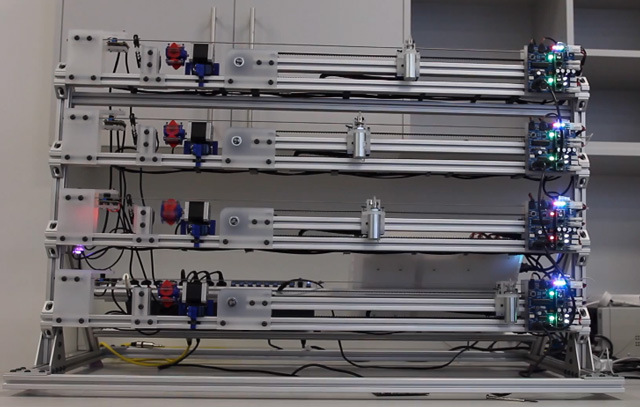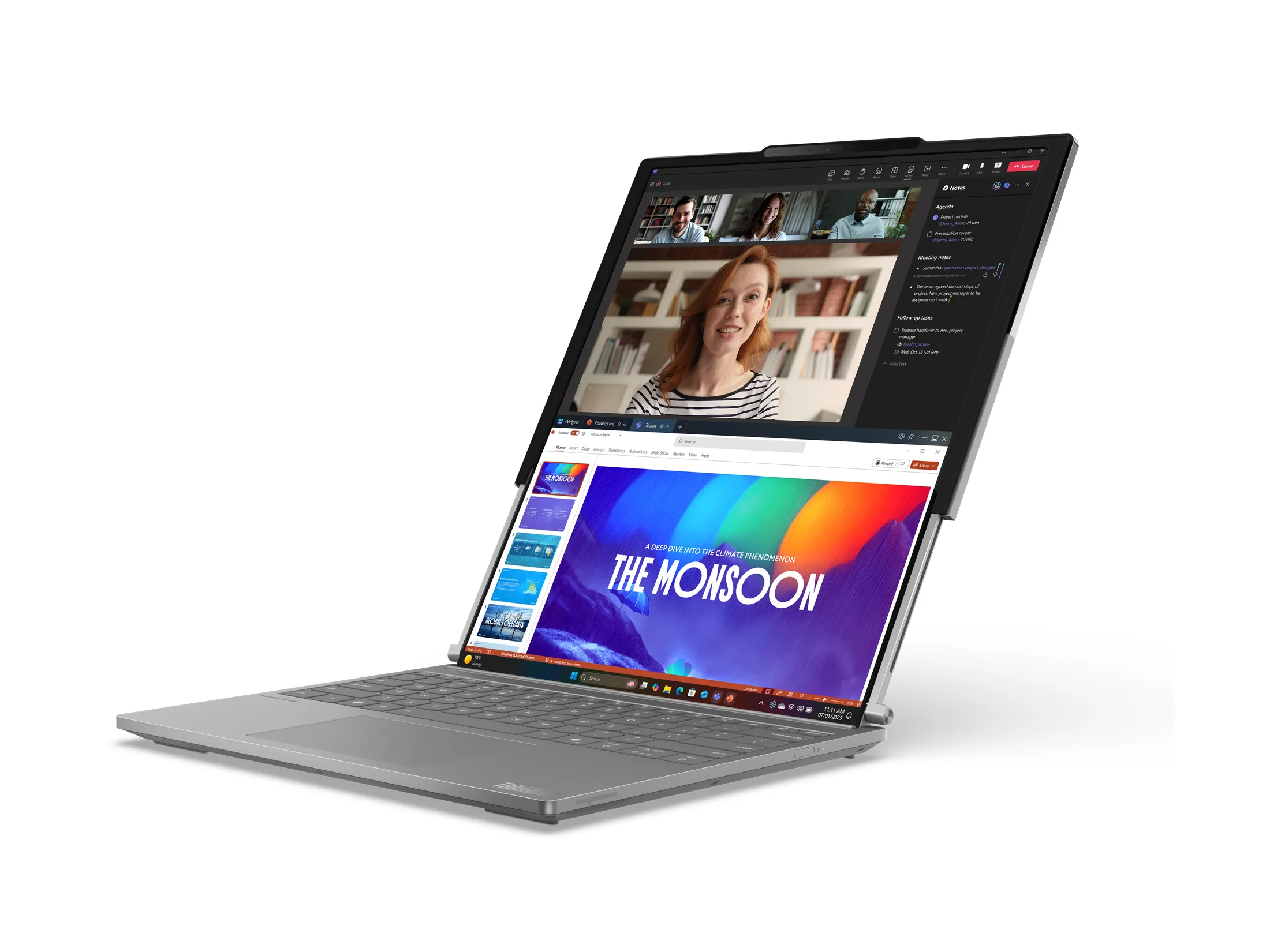
Back in 2011, the British rock band Muse was honoured to have one of its tracks, Hysteria, named as MusicRadar’s Best Bassline Of All Time. It’s a fantastic bassline, to be sure, and Christopher Wolstenholme is a wonderful bass player. But it’s even more impressive when it’s being played by MechBass, a robotic contraption by New Zealand-based engineering student James McVay. The elaborate device is MIDI-controlled, and “consists of four string units on an aluminum frame with sliding pitch shifters that alter the pitch of the strings, which are then struck by rotating pick wheels.” It’s a little convoluted to explain, so feel free to just watch the video below, or hit the jump for a much more detailed account of what went into MechBass’ construction.
Everything I designed in Solidworks, and lasercut/3D printed and assembled my self. Most components went through 3 or more design iterations.
The pitch shifter is open loop, with a NEMA23 stepper driving it to the desired position, and limit switches allowing alignment upon startup. Carriage is a custom design, riding on 80/20 using their low friction bearing pads. An igus cable carrier manages the wires for the solenoids during movement.
The control board is a completely custom design, based upon the ATMega328 (for Arduino compatibility), and as such is programmed with that IDE. Stepper motor drivers are dropped in that interface between the Microcontroller and stepper motors, while a MOSFET drives the solenoids. MIDI interface follows the MMA standard for connecting the devices on a bus. Each string only responds to MIDI messages on their designated MIDI channel. Decoupling capacitors and TVS’s in close proximity to the drivers are present to minimize transients during braking of the stepper motors (particularly the one for the pitch shifter).
A servo beneath the pickwheel stepper motor enables the motor to be pivoted, bringing the picks closer to or further away from the string, allowing the volume of the picks to be altered.
Felt covered arm attached to a servo allows for damping (muting) of the string on demand (noteOff).
An optical pickup is employed instead of the traditional magnetic pickup, due to the large amount of electromagnetic noise associated with all the actuators of the system.
Traditional bass machine heads are used for tensioning the string, integrated into the top of the main pitch shifter assembly.
Power supply box at back houses 3 power supply units (5V and 2x 24V, 750 watts total), attached to modular connectors for connection to each of the boards. 5 V supplies logic and servos, as well as the pickups (through a 3.3V LDO regulator on a board close to the pickups), while one 24 V supplies the solenoids, and the other for the stepper motors.
[ HackADay ] VIA [ LaughingSquid ]










